Weed Control for Pavers: Effective Strategies
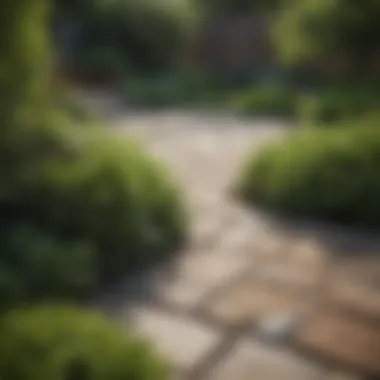

Intro
Weeds are as pesky as that one relative who shows up uninvited. They sneak into the crevices of our pavers, seemingly overnight, and before you know it, you’re caught in a tussle with stubborn foliage that ruins your carefully curated outdoor space. For homeowners and landscapers, this battle against the green invaders isn’t just a facial issue; it impacts the overall aesthetics and durability of paved surfaces.
In this article, we tackle the various faces of weed control in paved areas. From understanding the roots of the problem—literally—to exploring both time-tested techniques and innovative solutions, we aim to get your paved spaces back under control. We also highlight sustainable methods that respect the environment while effectively managing undesirable plant growth. Let’s dive into the nitty-gritty of keeping your pavers weed-free, so you can relish in the beauty of your outdoor spaces without the eyesore of errant weeds.
Understanding the Importance of Weed Control
Weed control is imperative for anyone who wants to maintain the integrity and beauty of their paved surfaces. It’s not just about keeping your garden looking its best; it’s about preserving the very structure of your pavers. When weeds decide to establish themselves in between these stones, they can signal a range of issues that can lead to greater damage over time. This section discusses the significance of addressing weed growth effectively by examining the implications of ignoring these pesky plants, focusing on their consequences, aesthetic impacts, and functional complications.
Consequences of Uncontrolled Weeds
Ignoring weed issues can result in a snowball effect. At first, it might seem harmless—just a couple of green shoots here and there. However, without prompt intervention, those weeds can spread and become a major problem. Here are some of the most notable consequences:
- Structural Damage: Weeds often penetrate the joints between pavers, causing them to shift and even crack over time. This can be costly to repair, especially if the shifting affects drainage or leads to more significant structural problems.
- Increased Maintenance Costs: As weeds grow, they require more aggressive and frequent removal tactics. This means more time spent on maintenance or increased costs if you hire help to tackle the problem.
- Potential for Pest Infestation: Weeds can also attract unwanted pests that might make their home in your paved areas, creating a cycle of issues that are hard to break.
Ultimately, allowing weeds to flourish not only detracts from the beauty of your outdoor spaces but also sets the stage for further complications in your property’s upkeep.
Impact on Aesthetic Appeal
Aesthetics play a significant role in the outdoor experience. Paved areas should evoke a sense of harmony and craftsmanship. When weeds infiltrate these spaces, they can mar the carefully curated designs, creating a chaotic look that’s anything but inviting.
- Visual Disarray: Overgrown weeds disrupt the flow of pathways and patios. Instead of a clean, organized appearance, the viewer is met with an unsightly array of green that clashes with the surrounding landscape.
- Reduced Property Value: For homeowners, the impact on value cannot be underestimated. Prospective buyers might be turned off by a weed-riddled yard, leading to lower offers or protracted selling periods.
When you think about maintaining your paved areas, consider it as an extension of your living space. The cleaner and more well-kept it is, the more appealing it becomes to both residents and visitors alike.
Functional Complications of Weeds
Beyond aesthetics, weeds pose practical challenges that can affect how you use your paved surfaces. These complications can hinder functionality in various ways:
- Obscured Pathways: Weeds can obscure paver patterns and pathways—making navigation less intuitive and potentially dangerous, especially in dark or poorly lit areas.
- Increased Risk of Slips and Falls: Accumulated weeds can create slippery surfaces, especially when wet. This becomes a safety issue that all homeowners should be aware of.
- Compromised Drainage: Weeds can interfere with proper drainage systems. If they grow in drainage areas, they can block water flow, leading to water pooling and damage to the foundation or surrounding landscape.
Overall, neglecting weed control ultimately leads not just to aesthetic degradation but practical challenges that can affect safety and usability. Recognizing these implications is the first step toward taking proactive measures in weed management.
Identifying Common Weeds in Paved Areas
When it comes to maintaining your paved areas, recognizing the types of weeds that might sprout up is crucial. Understanding which weeds you’re dealing with not only aids in effective removal strategies but also helps in preventing future growth. Knowledge about common weed types allows homeowners and landscapers to tailor their control methods based on each weed’s characteristics and behavior. Ignoring weed identification can lead to ineffective management and might waste time and resources, so let’s dig into this.
Types of Weeds Typically Found
Paved areas, be it patios, driveways, or walkways, tend to attract various types of weeds. Each type of weed comes with its unique attributes, growth patterns, and control challenges. Let's take a closer look at the common types typically found:
Broadleaf Weeds
Broadleaf weeds such as dandelions or clover are notorious for their flat, wide leaves. These weeds can sometimes catch the eye with their vibrant flowers or pleasing shapes. They actively proliferate in cracks or joints between pavers, making them a common sight. Their ability to swiftly take root can crowd out desirable plants or harm the aesthetics of your outdoor space. What stands out about broadleaf weeds is their resilience; they often thrive even in less-than-ideal soil conditions, thus complicating management efforts. The best approach to control these weeds is to tackle them early on by hand-pulling or using a targeted herbicide, before they can drop seeds all around your lovely paved areas.
Grassy Weeds
Grassy weeds, including crabgrass and foxtail, can often be mistaken for the desired grass in your lawn. However, they differ in texture and growth habit. Grassy weeds tend to grow in clumps and can become an eyesore after they start to take over paved areas. Their flexibility in growing in various soil types makes them particularly tricky to eliminate. One advantage of identifying these weeds early is that they generally have a growing pattern that can be anticipated based on the seasons. Using pre-emergent herbicides at the right time can help reduce their impact before they even poke through the surface of your pavers.
Perennial Weeds
Perennial weeds like dandelion or yellow woodsorrel can be quite a challenge as they regrow each year, often from deep taproots or established rhizomes. What sets them apart is their ability to return, even when you think you've eradicated them. These types of weeds aren’t just sprouting for the summer or spring; they can thrive right through the fall. Additionally, their longevity means that a simple pulling won’t do; you’ll need to remove the entire root system if you want to keep these stubborn invaders at bay. Their persistent nature makes it all the more important to remain vigilant and implement a combination of removal and preventative techniques bring about successful long-term results.
Seasonal Variations in Weed Growth
Weeds don't act the same way throughout the year. Different seasons can create unique conditions, affecting how and when weeds germinate, grow, and thrive. Understanding these variations helps in planning your weed management strategy effectively. Plants often grow according to the cycle of seasons. During warmer periods, some weeds may explode in numbers, requiring timely intervention.
Factors Contributing to Weed Growth
Several factors dictate whether you’ll find your paved area dotted with weeds or a pristine space.
Soil Quality
The quality of the soil plays a pivotal role in determining the types of weeds that can establish themselves. Poor soil, lacking vital nutrients, can promote the growth of opportunistic weeds. If it’s compacted or has poor drainage, certain weeds will see it as an open invitation. Healthier soil generally enables your plants to flourish, making them less susceptible to weed intrusion.
Moisture Levels
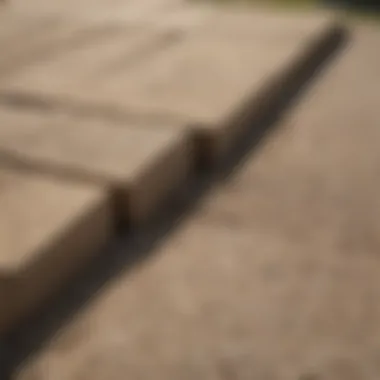
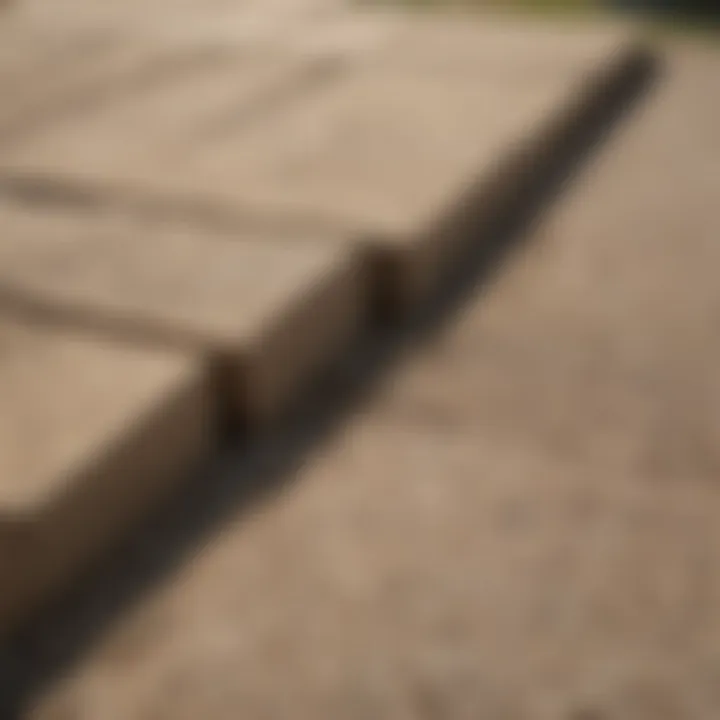
Moisture levels can significantly impact weed dynamics. Wet conditions can provide the perfect breeding ground for many weeds, while overly dry periods may limit their ability to take root. Monitoring and adjusting the moisture can help optimize conditions for your desired plants while stifling those unwanted intruders. Too much moisture can make the soil hospitable to weeds.
Sunlight Exposure
Some weeds require full sun while others might thrive in shady spots. Assessing the sunlight exposure in your paved areas can lend a hand in weed prevention. Plants that grow in full sunlight will often offer more competition to weeds, naturally reducing their chances of establishing with adequate coverage. Less sun, on the other hand, may create favorable conditions for certain types of weeds to thrive, prompting a need for additional control measures.
"Awareness of the types and conditions that weeds thrive in is half the battle in keeping your paved areas looking pristine."
Preventative Measures for Weed Growth
We all know that preventing weeds is far better than dealing with a full-blown invasion down the line. Taking the right preventative measures for weed growth can save both time and money, not to mention the headaches that come with constant maintenance. Here, we will unravel critical approaches to stop weeds before they get a foothold in your paver areas. Proper forethought into installation techniques, the use of barriers, and thoughtful amendments can create a strong defense against those pesky invaders.
Optimal Paver Installation Techniques
Choosing the Right Material
The kind of material piched for your pavers has a bigger impact than one might think. Often, homeowners might overlook this and grab whatever is on sale, but that's a misstep. Opting for high-quality pavers can significantly reduce weed growth. Materials like concrete and natural stone have a tight, durable structure that closes any gaps where weeds could sprout. Plus, some materials are permeable, allowing water to drain while blocking sunlight that weeds thrive on. The uniqueness here is that premium materials can act almost like a natural barrier. Yes, they're a bit more expensive upfront, but it's money well spent when you’ve not got a weed problem just around the corner.
Proper Spacing and Alignment
Getting the spacing right during installation is an absolute game changer. When pavers are closely placed together, it minimizes the room for weeds to sneak in. Think of it like jigsaw puzzles; pieces that fit snugly together leave little room for outside interference. Furthermore, maintaining a level bed when laying the pavers ensures that water doesn’t pool in any gaps, which could create an inviting environment for seeds to germinate. The catch? Without proper alignment, overtime shifting can occur, creating those gaps again. Therefore, paying attention to spacing and alignment is not just a minor detail; it’s a vital part of maintaining your paving’s integrity.
Using Weed Barriers Effectively
Weed barriers are another line of defense homeowners can use. A quality fabric barrier can block sunlight from reaching the soil while still allowing for water and nutrients to seep through. It’s like giving your pavers a shield against those opportunistic seeds. When installing these barriers, ensure they are at the same level as your pavers. Don't forget to secure them properly to avoid displacement over time, particularly if your area sees high winds or heavy rains.
Soil Amendments to Discourage Weeds
Adding Organic Matter
The soil health can directly affect weed growth. By enriching soil with organic matter, such as compost, you're effectively giving your plants a competitive edge while making it less hospitable for weeds. Think of organic matter like a secret weapon; it bolsters plant vitality, improves soil structure, and suppresses weed seed germination. Not only does it provide essential nutrients, but it can also help retain moisture, creating conditions that favor your desired plants rather than unwanted weeds. Therefore, investing time in soil enhancement is paramount for a flourishing garden.
Utilizing Mulches
Using mulch is another superb strategy worth considering. A layer of mulch around your pavers looks nice and acts as an excellent weed deterrent. You might choose wood chips, straw, or even gravel, depending on your garden's theme. This cover smothers small weeds and protects the soil temperature, while also conserving moisture. Just be careful; make sure not to apply it too thick, as excessive layers can lead to pests or mold build-up. Using mulches is like wrapping your paver's base in a cozy blanket, keeping it warm but also guarding against intruding weeds.
"An ounce of prevention is worth a pound of cure."
This saying rings especially true in the realm of weed management for pavers.
Creating a robust strategy for weed growth prevention involves several layers of consideration. By understanding the installation techniques, the role of barriers, and optimizing soil conditions, homeowners can stave off the headaches associated with weed proliferation.
Manual and Mechanical Weed Removal Techniques
Effective weed control in paved areas often requires a hands-on approach, where manual and mechanical techniques can make a world of difference. This section dives into these strategies, shedding light on their importance while helping you grasp the practicalities associated with each method. These tactics are particularly significant as they provide direct action that not only minimizes the weed presence but also ensures the integrity of your pavers remains intact.
Hand Pulling: A Close Encounter
Hand pulling weeds might sound like a chore, but it can actually be a highly satisfying task. At the core of this technique is the principle of physically removing the weeds at their roots, thus minimizing the chance of regrowth. To do this effectively, it’s essential to do a few things right. Ensure that you pull on a damp day when the soil is moist; this makes the process easier and more effective. You want to grasp the base of the weed firmly, ideally just above the soil line, and pull slowly but steadily to get the entire root out.
One benefit of hand pulling is its non-invasive nature; there is no introduction of chemicals to your environment. But let’s be real, it can be labor-intensive for larger areas and inconvenient during peak weed growing seasons. Yet, if you're diligent and address the situation early, hand pulling can be a game changer for maintaining a clean and tidy paved surface.
Utilizing a Pressure Washer
Using a pressure washer isn’t just for cleaning your driveway – it can also serve as an effective weed removal method. This approach involves using the high pressure of water jets to dislodge weeds that have embedded themselves between the pavers. This method can save time and effort compared to hand pulling, particularly if you have a larger expanse of paving.
When employing a pressure washer, make sure to adjust your settings correctly to avoid damaging your pavers. It’s best to keep the nozzle at a safe distance while targeting areas where weeds tend to flourish. It's also worth noting that this technique might not entirely eradicate the weeds but can significantly reduce their numbers. Just keep in mind, after a heavy rain or particularly sunny days, the water pressure could cause soil erosion if not used judiciously.
Employing Specialized Tools
When it comes to dealing with persistent weeds, specialized tools can prove invaluable in your weed control arsenal. Tools like garden hoes and weed torches each come with their unique benefits.
Garden Hoes
Garden hoes represent a classic yet efficient choice for weed control. These tools allow for precise movements, enabling you to target weeds while minimizing disturbance to the surrounding soil. The distinctive feature of a garden hoe is its long handle, which not only provides leverage but also helps to protect your back while working. This characteristic makes garden hoes popular among homeowners seeking a straightforward and effective solution. However, using a hoe might require a bit of skill, especially if you’re navigating a crest of pavers. Overdoing it can lead to soil disturbance, risking the paver's stability.
Weed Torches
Weed torches, meanwhile, present a more exuberant approach to weed control. Using a flame to scorch weeds may sound unconventional, but it’s gaining traction. The intense heat from the torch quickly kills the weed, targeting the cellular structure of the plant. The primary advantage here is speed; you can clear out large patches relatively quickly. Yet, caution is paramount with this method, especially if your pavers are near flammable materials or during dry seasons. Always have a water source nearby just in case.
Regular use of mechanical tools can significantly enhance your ability to maintain attractive paver surfaces, as they facilitate process efficiency while ensuring that your outdoor spaces remain weed-free.
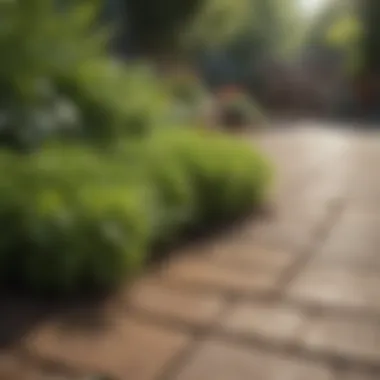

Overall, manual and mechanical weed removal techniques offer powerful options to tackle the weed dilemma. By understanding and employing these methods, you'll get closer to achieving a clean and inviting paved area.
Chemical Methods for Weed Control
Chemical methods can serve as a very effective approach to managing weed growth among pavers. This section dives into the multifaceted landscape of herbicides, detailing their types, usage, and the critical factors surrounding their application. Weeds, if allowed to flourish, can undermine not only the aesthetic appeal but also the structural integrity of paved areas. Therefore, understanding and employing the right chemical controls can be crucial in sustaining both beauty and functionality in hardscapes.
Herbicide Types and Uses
Chemical weed control generally falls into two categories: selective and non-selective herbicides. Each type plays a unique role in targeting specific weed varieties without damaging surrounding flora, which is essential for preserving the environment.
Selective Herbicides
Selective herbicides are formulated to target specific weed species while leaving desired plants unharmed. This precision sets them apart and often makes them a preferred option in paver maintenance. For example, they work well against common broadleaf weeds while sparing grass or flowering plants that gardeners wish to keep. Their main advantage lies in minimizing collateral damage, allowing users to combat unwanted growth without jeopardizing their landscape. However, it’s important to note that selective herbicides may require multiple applications or different formulations tailored to various weed types, which can complicate the control effort.
Non-Selective Herbicides
On the other hand, non-selective herbicides are designed to kill any plant they come in contact with. This characteristic can make them quite effective for large areas heavily infested with weeds. Homeowners, particularly in the early stages of paving, may find they can clear an area quickly using these products. However, the potential downside is the risk of harming desirable plants that are nearby. Users should approach with caution, especially in established gardens. Understanding that a non-selective herbicide can be a one-shot solution, but may necessitate a cleanup of any affected plants thereafter is vital.
Safety Considerations with Chemicals
When dealing with chemical controls, safety can't be an afterthought. Homeowners should ensure they adhere strictly to the recommended safety guidelines, including wearing gloves, masks, and protective eyewear during application. Also, it’s crucial to ensure that pets and children are kept at a safe distance during and after application, until it's deemed safe.
Timing Applications for Efficacy
Selecting the right moment to apply herbicides affects their performance significantly. A well-timed application can yield the best results in weed control.
Best Seasons for Application
The most effective time to apply herbicides typically coincides with the early growth stages of weeds— spring being the prime season. During this time, plants are actively growing and more susceptible to chemical treatments. Applying herbicides before the weed matures can save a lot of trouble later. Some products are geared to work best in warmer weather, while others may act more effectively in cooler conditions. Timing is everything here.
Weather Considerations
Weather plays a crucial role too. Ideally, the weather should be calm and dry during application. Rainfall within 24 hours of applying a product can wash away the herbicide, rendering it ineffective. Wind also matters—a breezy day could cause drift, risking collateral damage to adjacent plants. Homeowners would do best to check forecasts and choose windows of low wind and low rain when planning their application.
Sustainable Alternatives to Chemical Control
In recent years, the emphasis on sustainable gardening methods has brought the topic of weed control into sharper focus, particularly for those using pavers in their landscaping. Chemical herbicides, while effective at tackling unwanted flora, often carry environmental risks that can affect both the soil and any surrounding vegetation. Consequently, homeowners and landscaping enthusiasts are increasingly seeking alternative solutions that align with greener practices. Choosing sustainable methods not only shields the environment but can also lead to long-term advantages, like healthier soil and reduced chemical runoff.
Natural Herbicide Solutions
Vinegar
Vinegar stands out as a well-known natural herbicide, primarily due to its acetic acid content. It’s not just the household condiment but can also serve as an effective means to combat stubborn weeds. The key feature of vinegar lies in its capacity to desiccate plants. When applied in higher concentrations, it can effectively kill many types of weeds by drawing moisture away from their leaves. This natural solution is particularly appealing to those seeking to minimize their ecological footprint when they tackle weed problems.
However, it’s not without its quirks. Vinegar tends to be more effective on young, tender weeds rather than established, hardy varieties. A downside is also its non-selective nature; it may harm desired plants if not applied carefully. Thus, pinpoint application using a spray bottle or brush can help target those pesky weeds while safeguarding surrounding flora.
Salt
Salt, another common household item, holds potential as a weed control agent. Typically used for seasoning food, it works via dehydration. When applied directly to weeds, it can cause cellular damage that leads to plant decline. Salt is an inexpensive, straightforward alternative, making it a favored choice among many looking to avoid more complicated solutions.
Yet, salt's unique character brings some drawbacks that should be taken into account. It can persist in the soil for extended periods, potentially leading to soil degradation over time. Moreover, its non-discriminatory nature can damage nearby plants and soil health, so caution is necessary in its application. A careful solution might involve mixing salt with water for targeted sprays, ensuring minimal impact on the surrounding ecosystem.
Organic Mulching Strategies
Using organic mulch is yet another sustainable tactic for preventing weed growth in paved areas. Mulch acts as a barrier, inhibiting sunlight from reaching weed seeds, thereby reducing their chances of germination. Furthermore, as mulch breaks down, it nourishes the soil, enriching it over time.
Common organic materials for mulching include wood chips, straw, and shredded leaves. Choosing the right type of mulch can depend on regional availability and aesthetic preferences. For instance, wood chips create a neat, finished look, while straw may offer a more rustic vibe. The benefits of mulching extend beyond weed control; they also help in moisture retention and soil temperature regulation — a win-win for your garden setup.
Cultivating a Diverse Plant Environment
Another meaningful method to ensure weed management lies in cultivating a diverse plant environment. By introducing a variety of plants, homeowners can create a more balanced ecosystem. This diversity can lead to natural competition among plants, making it more difficult for weeds to establish themselves. Furthermore, certain plants, like clover, can serve as living ground covers that suppress weed growth by occupying space and utilizing soil resources.
Engaging in such a planting strategy also adds visual interest to the landscape, presenting a more vibrant and lively appearance overall. Additionally, incorporating native plants can lead to more robust ecosystems, as these plants are often better suited to local conditions.
By considering these sustainable alternatives to chemical control, homeowners not only promote ecological health but can achieve effective weed management in their paved areas.
Regular Maintenance to Prevent Reinfestation
Maintaining pavers to prevent weed reinfestation is akin to keeping a garden in bloom; the effort invested today saves headaches tomorrow. With weeds capable of sprouting in a mere matter of days, regular upkeep plays a pivotal role in ensuring that paved areas look neat and remain functional. This section explores the specific actions that contribute to a weed-free environment while highlighting the long-term benefits of diligent maintenance.

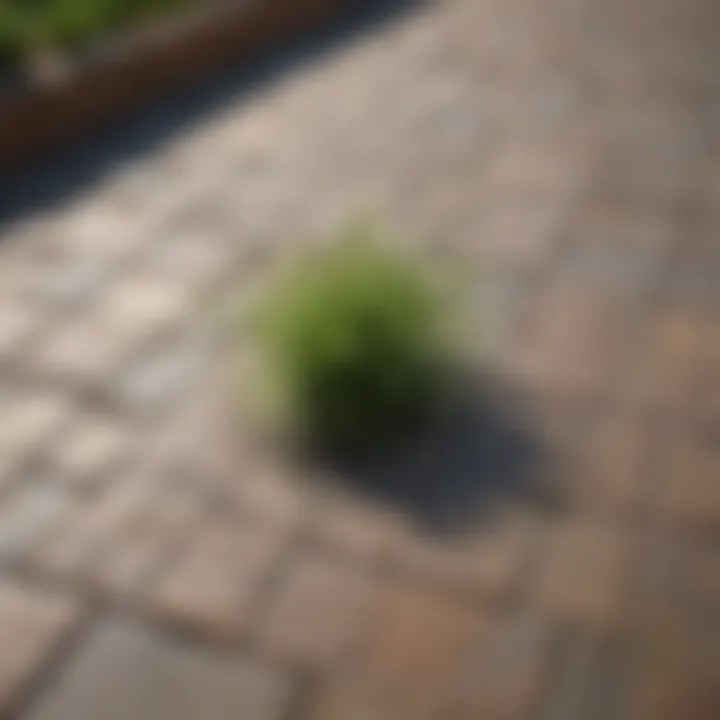
Routine Inspections and Early Interventions
Routine inspections act as the first line of defense against weed growth. Regularly walking through paved areas allows homeowners to catch emerging weeds before they establish themselves. These yard audits don't have to be labor-intensive; a quick glance every week or so can reveal new growth. If noticed promptly, pulling up small weeds by the roots can prevent them from spreading, averting a larger problem down the line. Early interventions also mean using less chemical treatment, aligning with a more sustainable gardening approach.
Scheduled Cleaning Practices
A clean paved area is less inviting to unwelcome greenery. Instituting a cleaning schedule is essential.
Degreasing Oil and Debris Removal
Degreasing oil and debris removal is crucial in keeping pavers free of substances that can encourage weed growth. Oil from machinery, cars, or soil can build a grimy layer, inadvertently creating a haven for various plants. By removing this residue, the pavers are left clean and less fertile for weeds. This method's key characteristic is its straightforward application and effectiveness.
While degreasing is a beneficial choice for maintaining aesthetics, it’s important to ensure that the cleaning products used are environmentally friendly. Some cleaners might contain harsh chemicals, potentially harming nearby plants or soil health. Therefore, selecting biodegradable options can mitigate those risks while still achieving cleanliness.
Power Sweeping
Power sweeping offers another robust method for cleaning paved surfaces. This technique involves utilizing a motorized tool equipped with stiff brushes designed to dislodge debris and weeds from the joints of the pavers. The remarkable feature of power sweeping lies in its efficiency—covering larger areas in less time when compared to manual methods. This approach not only cleans but also reduces the soil and seed buildup that weeds need to flourish.
However, power sweeping might not be ideal for delicate paver types as it could scratch or damage surfaces. It's crucial to adjust the pressure and technique according to the materials being cleaned.
Integrating Plants for Natural Weed Suppression
Integrating hardy, ground-covering plants can provide a multifaceted approach to weed suppression. These plants not only beautify your space but can also outcompete weeds for resources like sunlight and nutrients. Think about using varieties such as creeping thyme or clover, which are known for their effectiveness in choking out unwanted growth while enhancing soil structure.
Using plants as a barrier utilizes nature's own mechanisms, contributing to a more resilient ecosystem. As complexity increases with the variety of plants chosen, it may require a deeper understanding of plant interactions to ensure the intended outcomes. Thus, engaging with a knowledgeable landscape expert can provide insights tailored to individual gardens.
Regular maintenance not only prevents reinfestation but also ensures that pavers stay as functional as they are beautiful. A proactive approach pays off in the long run, reducing the need for intrusive methods and keeping your paved areas inviting.
Addressing Long-Term Weed Control Challenges
When it comes to maintaining paved areas, the need to tackle weed issues in the long run cannot be overstated. Weeds can be a persistent nuisance, creeping their way through the crevices and ruining the overall appeal of your outdoor area. If you think of controlling weeds as a game of chess, the long-term strategies you choose are your moves toward checkmate. These strategies should focus on preventing reinfestation and understanding the underlying factors that allow weeds to thrive in the first place.
Effective long-term weed control helps preserve not just the aesthetics of your paved surfaces, but also their structural integrity. Weeds’ roots can penetrate the joints, potentially leading to cracks and uneven settling of pavers. Therefore, addressing these challenges is crucial for ensuring that your paving remains visually pleasing and functionally sound.
Weed Resistance Dynamics
Weed resistance is not just a buzzword; it’s a reality that every homeowner should consider. Over time, certain types of weeds adapt to the control measures we apply, whether they be chemical or natural. Think of it like a game of dodge ball—if you constantly throw the same way, your opponent will figure out how to avoid it. Farmers and gardeners have seen various types of weeds, like dandelions and crabgrass, evolving resistance to standard herbicides.
To effectively counter this, it's essential to diversify your control tactics. By integrating both chemical and non-chemical methods, you can create a more holistic approach. This can involve alternating between different types of herbicides and combining them with physical removal strategies like hand-pulling or mulch applications. Addressing resistance requires vigilance and adaptability from the get-go; otherwise, you may find that your efforts are in vain.
Combining Tactics for Better Results
When you think about effective weed management, combining various techniques can yield richer results. By merging preventive measures with active weed control, you could create a fortress against weed growth. For example, using both natural barriers, like mulching, along with mechanical methods such as pressure washing, can create a comprehensive plan to deal with weeds more effectively.
Here’s a quick list of effective tactics you could consider:
- Regular Monitoring: Keep an eye on emerging weeds, aiming to tackle them before they can establish a stronghold.
- Routine Maintenance: Scheduled cleaning helps remove organic debris where weeds may hide.
- Cultural Practices: Implement practices such as changing soil conditions or moisture levels to make the environment less hospitable for weeds.
Each of these strategies plays a role in a larger system of weed management, creating a synergy that enhances effectiveness. By acknowledging the strengths of various methods, homeowners can better arm themselves against the relentless nature of weeds.
Evaluating the Effectiveness of Methods
In the world of weed control, not all methods are created equal. Regular evaluation allows you to see what works and what doesn’t, ensuring your efforts are not wasted. After all, if you can’t measure your progress, how can you know if you're winning the battle?
Start by keeping records of your weed management techniques. Are the weeds coming back faster after applying a specific herbicide? Is mulching helping to deter growth, or is it merely a temporary fix? Through observational data, you can fine-tune your approach.
Additionally, don’t shy away from seeking the opinions of local landscaping experts. They can provide insights tailored to your specific area and climatic conditions, allowing you to adapt more efficiently. Evaluating effectiveness goes beyond just documentation; it's about staying engaged and informed to adapt to the ever-changing landscape of weed control.
"The fight against weeds is not just a seasonal endeavor; it's a long-term commitment to maintaining the beauty and structure of your space."
By addressing weed control challenges head-on through awareness of resistance dynamics, combining tactics, and evaluating effectiveness, you can make significant strides in transforming your paved areas into a weed-free oasis.
Creating an Educated Approach to Weed Management
Weed management isn't just about pulling out a few pesky plants now and again. It requires a thoughtful strategy that embodies understanding, planning, and consistent action. Creating an educated approach to weed management means taking the time to invest in knowledge about how weeds thrive in paved areas and applying that knowledge to reinforce your outdoor spaces.
An informed strategy can help you save both time and money, knowing what measures are practical for your particular situation. You can avoid over-relying on expensive chemicals or labor-intensive methods that yield little return. When one understands the local ecosystem, they'd be better prepared to choose methods that synergize well with natural growth processes, maintaining a healthier environment for both plants and wildlife. Furthermore, effective weed management can enhance the visual appeal of paved areas, adding to the overall aesthetic of your landscape.
Understanding Weed Biology and Life Cycles
Weeds have their own life stories. They come in various forms, from perennial plants that return year after year to annuals that flourish and die within a single growing season. Knowing the biology of the weeds that often invade your paver spaces is crucial. For instance, some weeds can seed prolifically, throwing their seeds around like confetti and increasing their foothold in your garden. Others may spread through underground roots or rhizomes, establishing a hidden network beneath the surface.
Understanding these growth patterns helps you time your management strategies effectively. Early intervention is critical; catching weeds in the seedling stage can greatly decrease their chances of taking over your paver areas.
Engagement with Local Landscaping Experts
When in doubt, consult the pros. Engaging with local landscaping experts can provide tailored advice that considers both your specific paving situation and your local ecosystem. Landscapers often have a rich repository of knowledge about what works best in your area, from choosing pest-resistant plant varieties to effective weed control measures relevant to the climate.
Furthermore, many landscapers are aware of the specific weed species that plague your locality. They can provide insights into seasonal patterns and how certain control methods may be more or less effective depending on the time of year. Establishing a relationship with these professionals can not only enhance your approach to weed management but also build a community of practice that could lead to sustainable management practices in the future.
An educated approach to weed management empowers homeowners, leading to sustainable solutions and beautiful paved spaces for the long haul.



